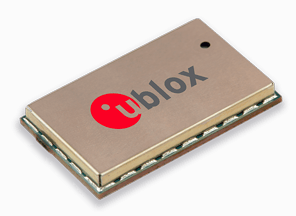LPWAN = Low Power Wide Area Network
LPWAN is typically thought about as cellular data networks but that involves a contradiction since cellular and low power are inherently in conflict with each other. For instance, a standard 3G or 4G cellular modem will have a peak current draw of up to 2A during transmission and needs to be carefully power managed if running from batteries. This has meant that a 10 year operating life from a primary cell battery either needs a huge primary cell or very infrequent communications. So what are the alternatives?
In IoT Versus M2M we looked at how the real benefit of IoT (Internet of Things) is that rather than a single Machine to Machine link being established, there are now multiple devices connected via shared web services and their combined data is being used to create extra value, and particularly if Big Data analytics is added to the mix.

SigFox Logo

LoRa Alliance
There is also a lot of potential disruption in this. LoRa and SigFox are both looking to provide lower cost networks to replace dependency on cellular network operators for coverage and also address the power consumption problem. There is an excellent comparison of these 2 systems in SigFox versus LoRa. And both are trying to disrupt existing cellular network providers. An overall view at available at NB-IoT versus LoRa versus SigFox.
NB-IoT
Which introduces Narrow Band IoT or NB-IoT as it is now commonly abbreviated to. Just to continue the confusion of acronyms, it is also called CAT-NB and CAT-NB1. There is a detailed view of this technology and its likely long term adoption at NB-Iot is dead – Long live NB-IoT.
The summary is that NB-IoT is too late to market and requires too much equipment changeover to win the early adopter market, especially in the USA, but will win in the long term. In the interim there is a host of other options also being developed. The cellular network operators have realised, at least 5 years too late, that their business and technology models were both under attack simultaneously. This is a particularly dangerous form of disruption.
Hardware is now becoming available and China adoption of NB-IoT makes them the main early adopter market.

Quectel BC95 NB-IoT Module

u-blox SARA-N2 NB-IoT Module
Low Power Cellular
So if up until now, low power and cellular were not usually compatible concepts, what is changing to address that?
To reduce power consumption, you have to have one or more of the following:
- reduce transmit power
- increase receiver sensitivity
- reduce transmit duration
- increase transmit interval
- reduce network registration time
- reduce data rate
Some of these can be mutually exclusive. However the key elements that are working together is to reduce the data rate and use a modulation scheme that means the transmitter power can be reduced. LoRa does this very well and NB-IoT is looking to achieve a similar thing. There are trade-offs and the lower data rate for NB-IoT means it is best suited to very small packets. CAT-M1 will require less power for larger packets because the faster data rate means the transmit time is a lot shorter.
Low Cost Cellular
So we have looked at the power consumption angle. How about cost and business model. And there are two aspects to cost. There is the hardware cost and there is a the network operations cost. To reduce cost you have to do one or more of the following:
- reduce silicon and software protocol stack complexity
- high volume production allows economies of scale for hardware
- increase the number of channels available in the network
- increase the number of simultaneous connections in the network
- reduce margins
Both SigFox and NB-IoT aim to make the end device hardware cost as low as possible. In the case of NB-IoT and CAT-M1 the channel bandwidth can be reduced and so the same bandwidth can support multiple devices instead of just one. The power level in the device transmitter is reduced by reducing the bandwidth and data rate. As an example, a CAT-M1 module has a peak transmitter current draw of 500mA which is a factor of 4 lower than CAT-1. So low cost and low power can go together very well.
The graph below shows how the various cellular standards relate to each other.

Cellular IoT standards and how they relate
IoT Deployment Options
We have been using standard 3G/4G Cellular modems for our broadly distributed IoT offerings. As of the end of this month, we ship our first CAT-1 based offerings. These have the advantage of supporting both 4G with fall back to 3G. Although NB-IoT hardware is available now from both Quectel and u-blox, the networks in Australia don’t yet support it. And while NB-IoT is ideal for fixed location assets, we also do mobile systems so these need to be CAT-M1 once it is available.
CAT-M1 is expected to be available in Australia on the Telstra network around September 2017. I am also taking this as meaning that NB-IoT is 2018 or possibly even longer. So we plan to move to CAT-M1 as soon as it is available. The modules are expected to be available about the same time as the network upgrades.
Here are some CAT-1 and CAT-M1 offerings from Quectel and u-blox.

Quectel BG96 CAT-M1 Module

Quectel EC21 CAT-1 Module
The Quectel EC21 is what we are deploying in our units later this month.

u-blox LARA-R2 CAT-1 Module

u-blox SARA-R404M CAT-M1 Module
IoT Network Upgrades
Ericsson have announced the roll out plans for the Telstra Network CAT-M1 capability.
And Telstra have announced their own Telstra IoT Network Plans.
That is the overall Telstra road map. Summary:
– CAT-1 now
– CAT-M1 by September
– NB-IoT sometime after that but no dates yet
Other carriers will follow although Vodafone are well placed to introduce NB-IoT first as they have Software Defined Radio base stations from Huawei and so can roll it out as a software update.
Successful Endeavours specialise in Electronics Design and Embedded Software Development, focusing on products that are intended to be Made In Australia. Ray Keefe has developed market leading electronics products in Australia for more than 30 years. This post is Copyright © 2017 Successful Endeavours Pty Ltd.




















